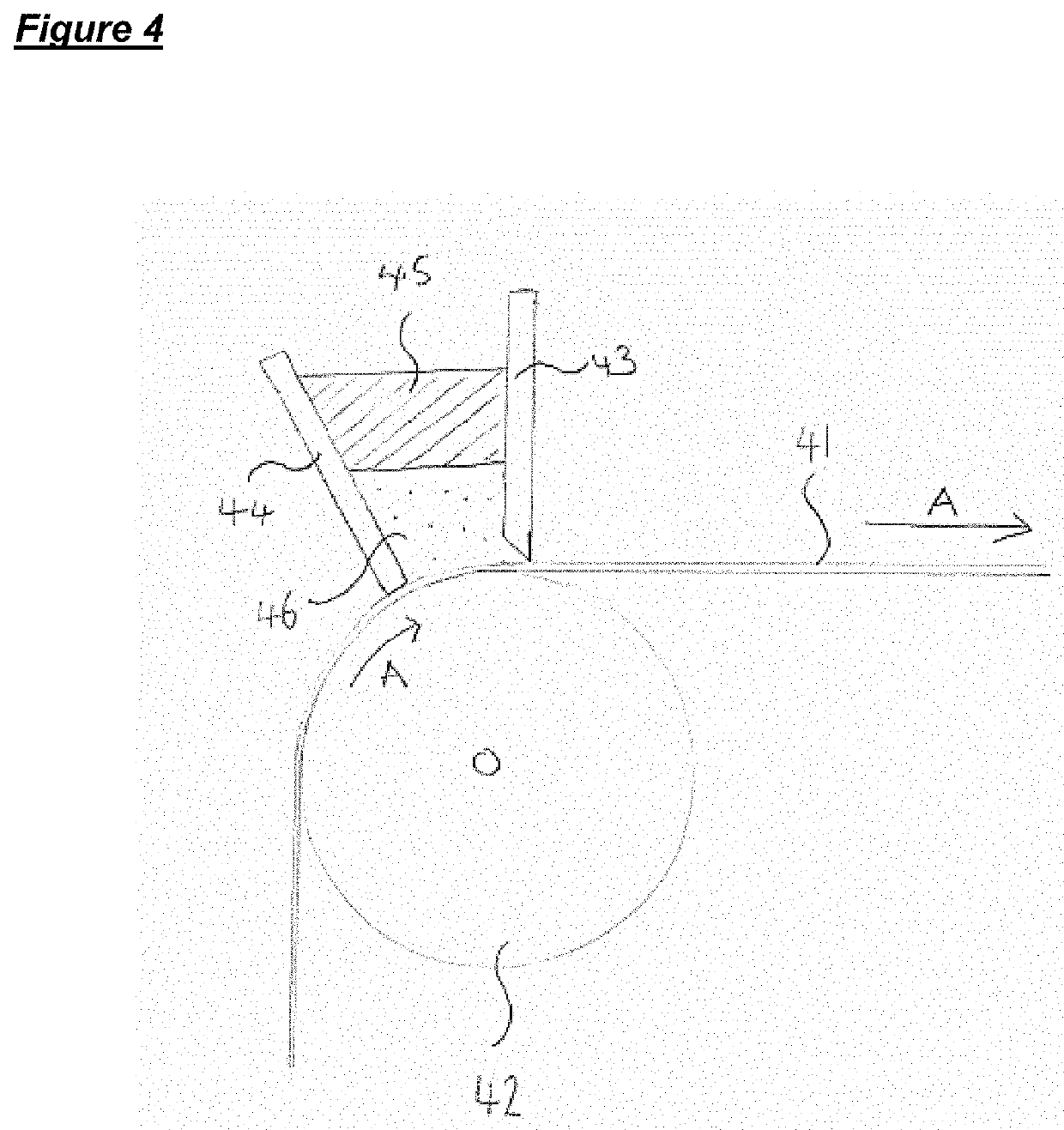Polymer-coated fabric
a technology of polymer coating and textiles, applied in the direction of heat resistance fibres, liquid repellent fibres, coatings, etc., can solve the problems of irritation or injury, the extent to which it modifies its mechanical properties, and the reduction of breathability
- Summary
- Abstract
- Description
- Claims
- Application Information
AI Technical Summary
Benefits of technology
Problems solved by technology
Method used
Image
Examples
Embodiment Construction
[0101]FIG. 1 shows a composite fabric 10. The upper surface of the composite fabric 10 comprises three regions 11, 12, 13. Regions 11 and 13 are formed from the same polymer composition and therefore have the same physical and visual properties, while the intervening region 12 is formed from a second polymer composition and has different physical and / or visual properties.
[0102]The composite fabric 10 is formed as a continuous piece of fabric, with the regions 11, 12, 13 extending longitudinally, and parallel, along the length of the fabric. Adjacent regions 11, 12 and 12, 13 are adjoining, such that the regions abut and are joined to each other, with no break or gap in the continuous polymer layer between them.
[0103]FIG. 2 shows a schematic cross-sectional representation of an embodiment of the composite fabric depicted in FIG. 1. The composite fabric 20 shown in FIG. 2 comprises a textile layer 21, a polymer layer 27 and a layer of adhesive 26. The textile layer 21 forms the lower ...
PUM
| Property | Measurement | Unit |
|---|---|---|
| temperature | aaaaa | aaaaa |
| angle | aaaaa | aaaaa |
| angle | aaaaa | aaaaa |
Abstract
Description
Claims
Application Information
 Login to View More
Login to View More - R&D
- Intellectual Property
- Life Sciences
- Materials
- Tech Scout
- Unparalleled Data Quality
- Higher Quality Content
- 60% Fewer Hallucinations
Browse by: Latest US Patents, China's latest patents, Technical Efficacy Thesaurus, Application Domain, Technology Topic, Popular Technical Reports.
© 2025 PatSnap. All rights reserved.Legal|Privacy policy|Modern Slavery Act Transparency Statement|Sitemap|About US| Contact US: help@patsnap.com



